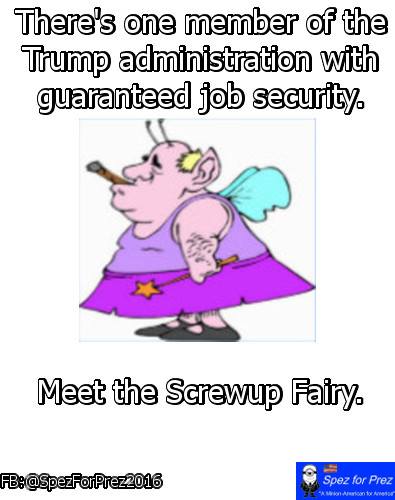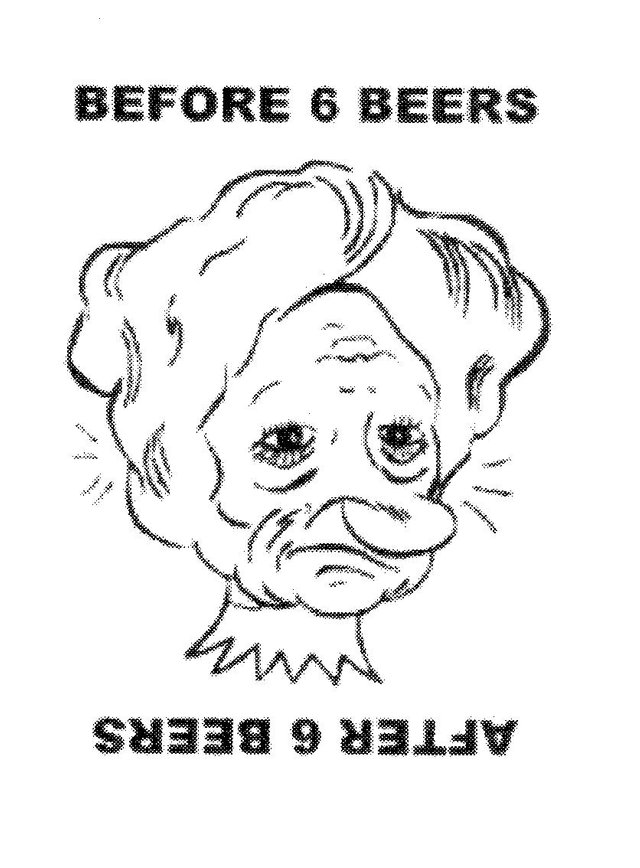Folklore, Trump, and the Screwup Fairy

Today on Facebook, this image appeared. It is an expression of folklore as it appears within the context of the internet. This image is a descendent of what Alan Dundes (1934-2005) once called Xerox lore, a genre of the modern "Urban Folklore." Pre-literate people did not use paper in a consistent way to convey traditional culture, and they certainly did not have access to copy machines. That said, as soon as copiers became a standard fixture in offices, people started using them to convey traditional culture, usually in the forms of cartoons and jokes. Here is an example; it's sexist and ageist, but cruelty was often an aspect of this early-modern form of folklore:

With advent of the internet, much of this sort of thing shifted to the new medium. Political humor is often the subject of internet humor. This image appeared in 2000 during the presidential campaign of George W. Bush versus Al Gore:
![76af04fc76b4fa589c5d1a8b1f70673a[1].jpg](https://steemitimages.com/DQmbtpvuPophEJxNgN5HDetuQQL7ahhFk3uCo8bvodJCpAK/76af04fc76b4fa589c5d1a8b1f70673a%5B1%5D.jpg)
Because many people had the skill and the access to programming tools that allowed them to express their own creativity, it took little time for an internet cartoon to become a "meme" - an image that reappeared repeatedly with new messages, drawing on the same motif. Thus, the idea that George W. Bush's presidency would be a "mini" version of his father's administration subsequently manifested as a critique of subsequent politicians:
![b732a3c3b171beac50bbb030d705a02c[1].jpg](https://steemitimages.com/640x0/https://steemitimages.com/DQmQwTGLY5ommqw3VimoQvQCQ5CcjoeEnDqwe5dcgiryTaD/b732a3c3b171beac50bbb030d705a02c%5B1%5D.jpg)
Presidents were not the only subject of the meme - candidates could be as well:
![hillary_evil[1].jpg](https://steemitimages.com/DQmWHnqqkA7GnoEEPkgQ4V8k5tcMPhxvRHbCi2xVEGSzSj2/hillary_evil%5B1%5D.jpg)
From a folklorist's point of view, it matters little whether an image came from a political campaign, a Russian troll factory, or to paraphrase Trump, "a four-hundred-pound guy sitting on his bed"; what matters is whether people - the folk - pick it up and distribute it. Folklore invariable comes from somewhere else, if it appeals to an audience, it is repeated. Dundes - working with Xeroxed jokes - recognized that in the modern age, folklore was not always passed on orally; the new "folk" was literate and had access to means to communication that reached with new media. When he first began his work with Xerox lore, Dundes could not anticipate the internet or its power to convey folklore, but there can be little question that this new virtual environment serves as a powerful means to distribute folklore.
And to demonstrate that a good meme takes on a life of its own, here are two more "Mini Me" images for the new administration:

And:
![30e46b35ce259a0ee8ef46dab7ddf6cf[1].jpg](https://steemitimages.com/DQmdnbasz6iLzBy8e5HhAbA9yQkLXH7fFjPukHPVwZLTTEh/30e46b35ce259a0ee8ef46dab7ddf6cf%5B1%5D.jpg)